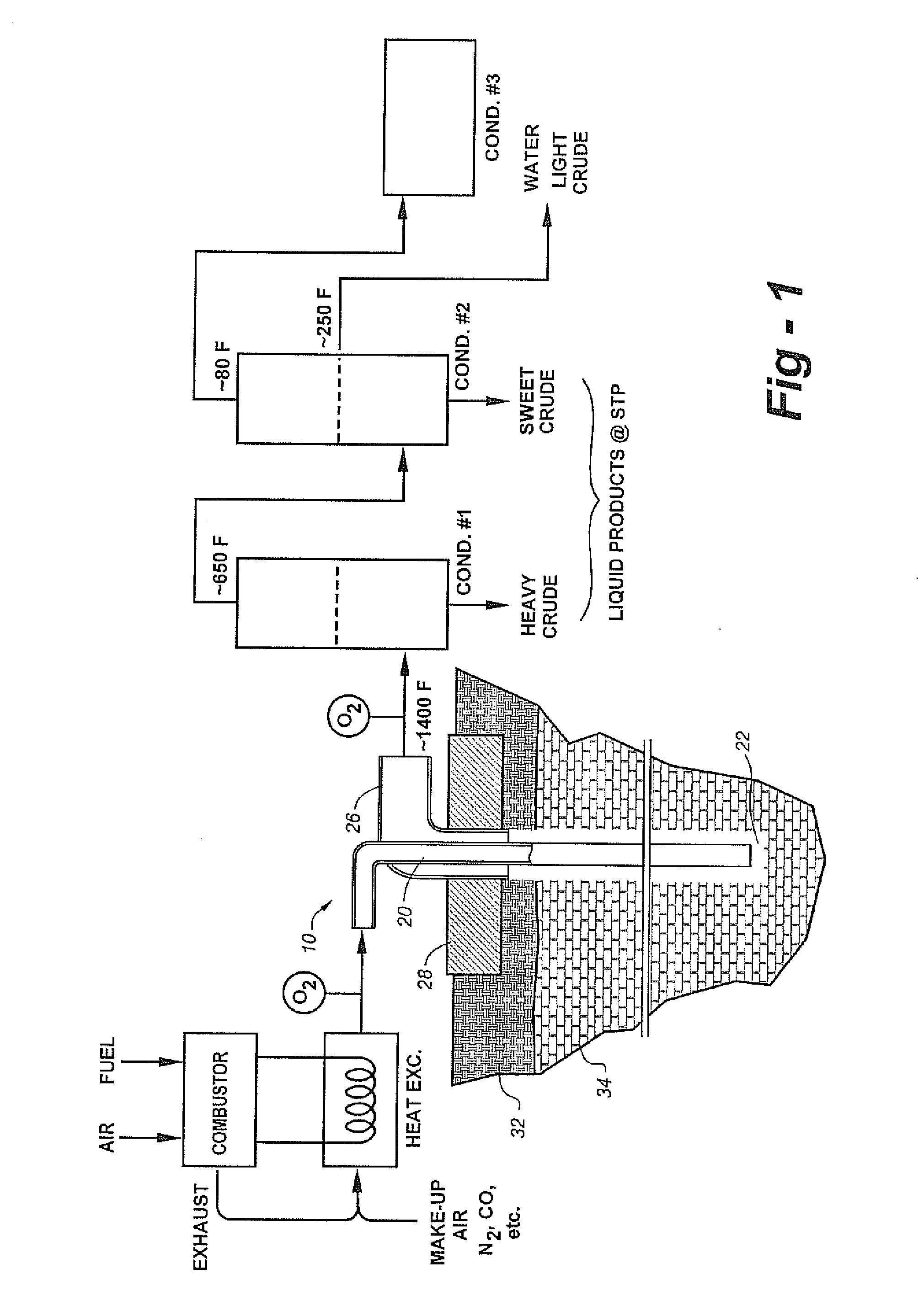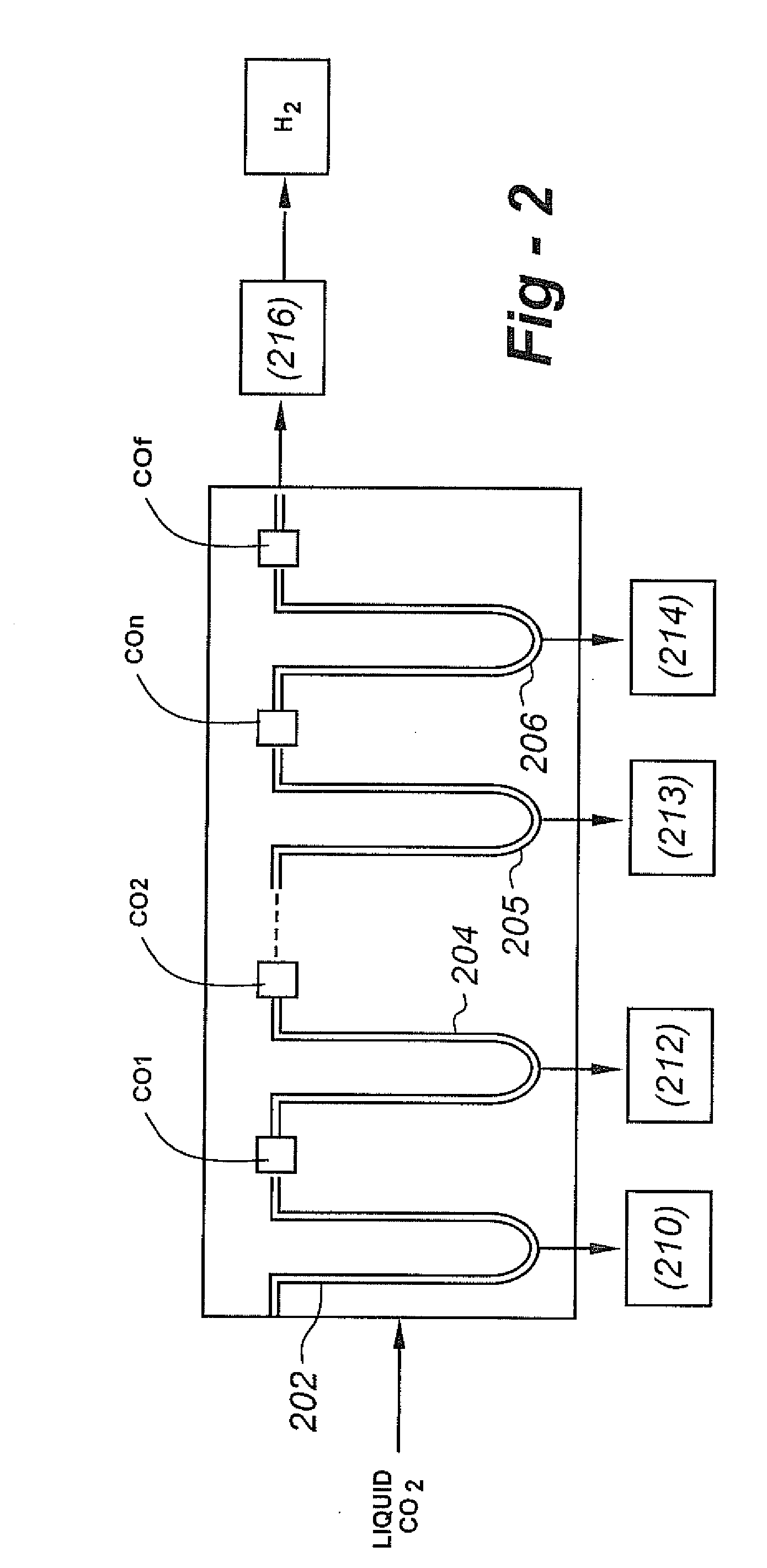Apparatus and methods for the recovery of hydrocarbonaceous and additional products from oil shale and sands via multi-stage condensation
a technology of hydrocarbonaceous products and equipment, applied in lighting and heating equipment, separation processes, wellbore/well accessories, etc., can solve the problems of in situ process, inability to recover total product recovery, and high cost of oil shale removal from the ground
- Summary
- Abstract
- Description
- Claims
- Application Information
AI Technical Summary
Benefits of technology
Problems solved by technology
Method used
Image
Examples
Embodiment Construction
[0032]In common with the teachings of U.S. Pat. No. 7,048,051 (“the '051 patent”), this invention is directed to the extraction of hydrocarbonaceous products from nonrubilized oil shale. The system and method are also applicable to recovery from oil sands and tar sands with appropriate engineering modification described in further detail herein.
[0033]Referring now to FIG. 1, a hole 22 is drilled through an overburden 32 and into an oil shale body or formation 34 to be treated. A processing gas inlet conduit 20 is disposed within hole 22. Preferably, the conduit 20 is constructed of a heat conductive and refractory material (for example, stainless steel) which is capable of withstanding temperatures of up to 2000° F. or greater. The processing gas inlet conduit 20 is preferably positioned within hole 22 by a distance of at least about twice the diameter of the conduit 20. An effluent gas conduit 26 is positioned around the opening of the hole 22 for receiving an effluent gas which in...
PUM
| Property | Measurement | Unit |
|---|---|---|
| depth | aaaaa | aaaaa |
| thick | aaaaa | aaaaa |
| temperatures | aaaaa | aaaaa |
Abstract
Description
Claims
Application Information
 Login to View More
Login to View More - R&D
- Intellectual Property
- Life Sciences
- Materials
- Tech Scout
- Unparalleled Data Quality
- Higher Quality Content
- 60% Fewer Hallucinations
Browse by: Latest US Patents, China's latest patents, Technical Efficacy Thesaurus, Application Domain, Technology Topic, Popular Technical Reports.
© 2025 PatSnap. All rights reserved.Legal|Privacy policy|Modern Slavery Act Transparency Statement|Sitemap|About US| Contact US: help@patsnap.com



